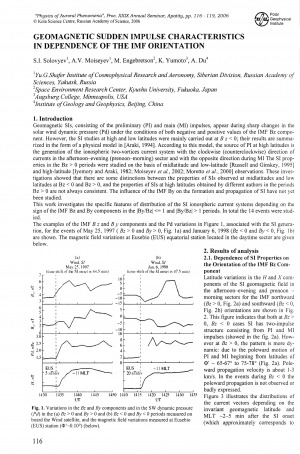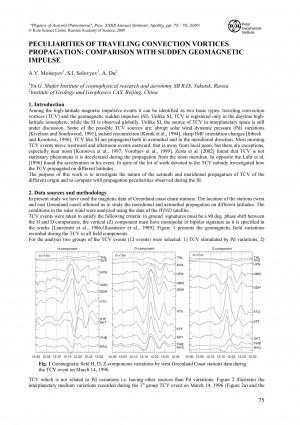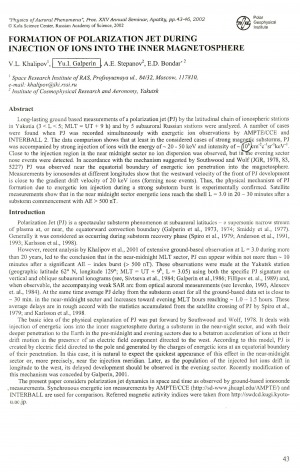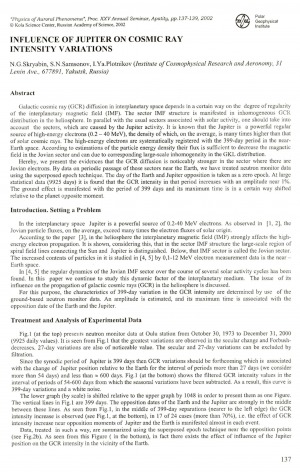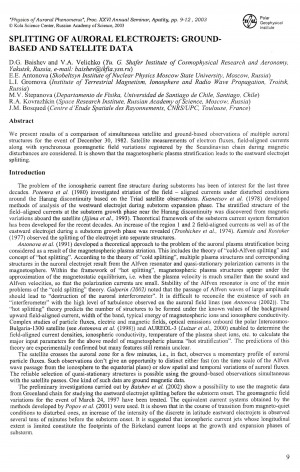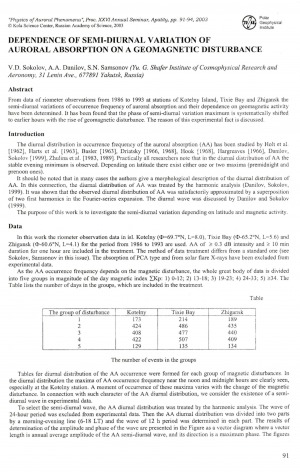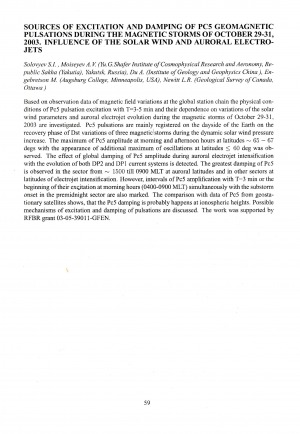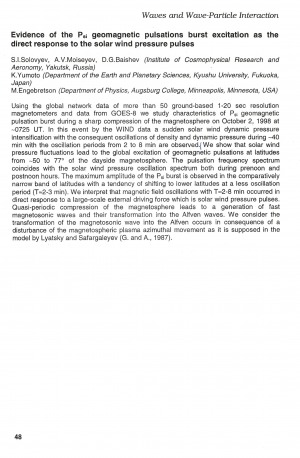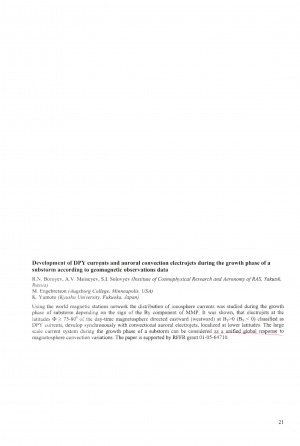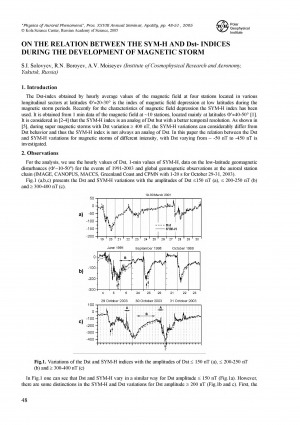Количество страниц: 4 с.
Geomagnetic sudden impulse characteristics in dependence of the IMF orientation / S. I. Solovyev, A. V. Moiseyev, M. Engebretson, K. Yumoto, A. Du // Physics of auroral phenomena : proceedings of the 29th annual seminar, Apatity, 27 February – 3 March 2006. – 2007. – P. 116-119.
Количество страниц: 4 с.
Moiseyev, A. V. Peculiarities of traveling convection vortices propagation: comparison with sudden geomagnetic impulse / A. V. Moiseyev, S. I. Solovyev, A. Du // Physics of auroral phenomena : proceedings of the 32nd annual seminar, Apatity, 3 – 6 March 2009. – 2010. – P. 75-78.
Количество страниц: 4 с.
Formation of polarization jet during injection of ions into the inner magnetosphere / V. L. Khalipov, Yu. I. Galperin, A. E. Stepanov, E. D. Bondar // Physics of auroral phenomena : proceedings of the 25th annual seminar, Apatity, 26 February – 1 March 2002. – 2002. – P. 43-46.
DOI: 10.1016/S0273-1177(03)00016-4
Количество страниц: 4 с.
Skryabin, N. G. Influence of Jupiter on cosmic ray intensity variations / N. G. Skryabin, S. N. Samsonov, I. Ya. Plotnikov // Physics of auroral phenomena : proceedings of the 25th annual seminar, Apatity, 26 February – 1 March 2002. – 2002. – P. 137-139.
Количество страниц: 3 с.
Splitting of auroral electrojets: ground-based and satellite data / D. G. Baishev, V. A. Velichko, E. E. Antonova, L. I. Gromova, M. V. Stepanova, R. A. Kovrazhkin, J. M. Bosqued // Physics of auroral phenomena : proceedings of the 26th annual seminar, 25 - 28 February 2003. – 2003. – P. 9-11.
Количество страниц: 4 с.
Sokolov, V. D. Dependence of semi-diurnal variation of auroral absorption on a geomagnetic disturbance / V. D. Sokolov, A. A. Danilov, S. N. Samsonov // Physics of auroral phenomena : proceedings of the 26th annual seminar, 25 - 28 February 2003. – 2003. – P. 91-94.
Количество страниц: 1 с.
Sources of excitation and damping of PC5 geomagnetic pulsations during the magnetic storms of october 29-31, 2003 influence of the solar wind and auroral electrojets : [тезисы докладов] / Solovyev S. I., Moiseyev A. V., Du A., Engebretson M., Newitt L. R. // International symposium on Solar Extreme Events of 2003 : programme and abstract book. – Москва : УНЦ ДО, 2004. – P. 59.
Количество страниц: 2 с.
Evidence of the Psi geomagnetic pulsations burst excitation as the direct response to the solar wind pressure pulses : [тезисы докладов] / S. I. Solovyev, A. V. Moiseyev, D. G. Baishev, K. Yumoto, M. Engebretson // Physics of auroral phenomena : 24 annual seminar, 27 February - 2 March 2001. – 2001. – P. 48.
Количество страниц: 2 с.
Development of DPY currents and auroral convection electrojets during the growth phase of a substorm accocding to geomagnetic observations data : [тезисы докладов] / R. N. Boroev, A. V. Moiseyev, S. I. Solovyev, M. Engebretson, K. Yumoto // Physics of auroral phenomena : 26th annual seminar, 25-28 February 2003 : abstacts. – 2003. – P. 21.
Количество страниц: 4 с.
Solovyev, S. I. On the relation between the SYM-H and Dst- indices during the development of magnetic storm / S. I. Solovyev, R. N. Boroyev, A. V. Moiseyev // Physics of auroral phenomena : proceedings of the 28 th annual seminar, 1-4 March 2005. – 2005. – P. 48-51.
